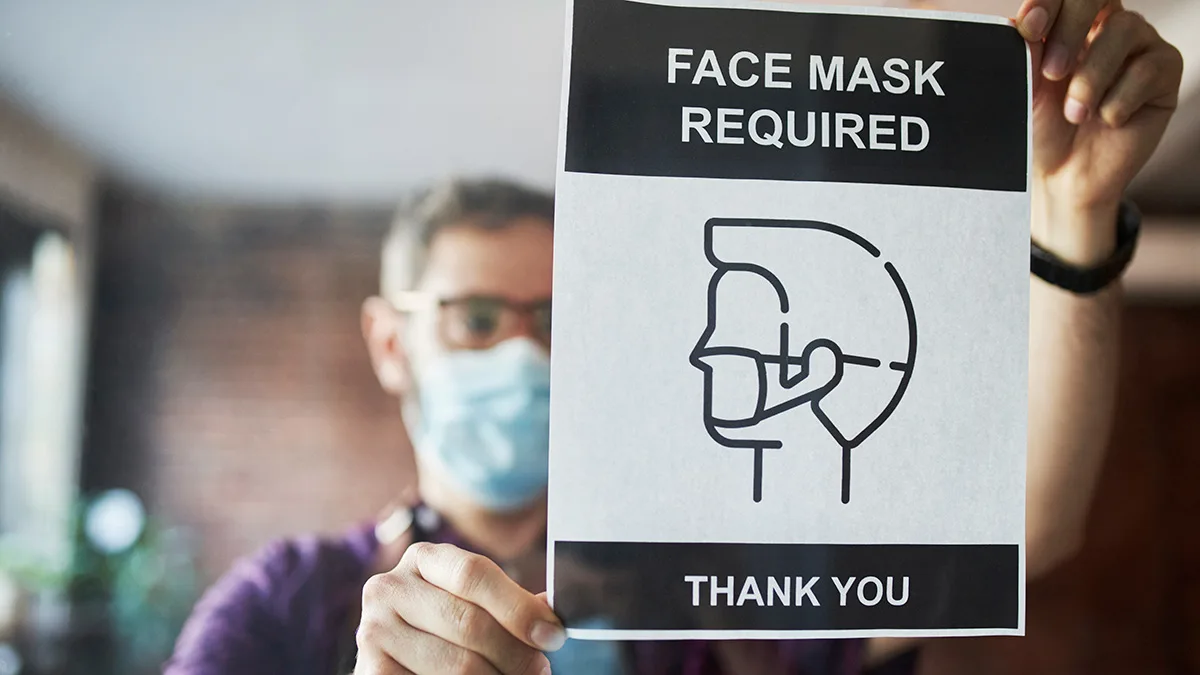
Overview
Former White House Coronavirus Response Coordinator Deborah L. Birx, MD, discussed key successes and critical gaps in handling the COVID-19 pandemic and how they help prepare us for next time.
Birx, Hahn and Fares look back to plan forward
Nearly five years after COVID-19 changed the world, experts are reflecting on the lessons and missed opportunities the pandemic brought. Looking back, there’s so much we didn’t know and so many things that could have been done differently.
One thing doctors, scientists and policymakers agree on is that we need to acknowledge what we’ve learned from the pandemic to be ready for the next one…because there will be a next one.
At the 2024 C3 Summit in New York City, former White House Coronavirus Response Coordinator Deborah L. Birx, MD, discussed key successes and critical gaps in handling the pandemic. Alongside former FDA Commissioner Stephen Hahn, MD, and moderator Maan Fares, MD, chairman of Global Patient Services at the Cleveland Clinic, Birx outlined urgent steps needed to enhance future pandemic preparedness. She emphasized the importance of data sharing, addressing misinformation and rapid response coordination among global health leaders.
Learning from the Early Days of HIV
Birx remarked that the early days of the pandemic were not unlike the beginning of the HIV/AIDS era with regard to public information.
“We forgot about the misinformation. Remember the promises of AIDS cures before we had a cure? Remember the talk of [viral spread via] mosquitoes and kissing?” she noted. “When we have a pandemic, there’s always misinformation. If we’d learned from the HIV situation, we would have known immediately that there was going to be misinformation and reminded people of that.”
What HIV research did teach us was how T cells worked. That knowledge was subsequently put to use to create immunotherapies that are now extending the lives of people with cancer. That’s due to the investments made in expanding our knowledge of basic immunology in the 1980s. “So good things can come out of pandemics if you invest in them,” said Birx.
In addition, the technology used to assess HIV viral load was applied to COVID testing. “The HIV viral load machines are exactly the same machines that were used for diagnosing COVID. That was an investment we all made around the globe,” Birx noted.
Misjudging Asymptomatic Individuals
Another mistake made in the early days of the pandemic was not recognizing the asymptomatic spread of COVID, especially among younger people. “I could not get the CDC or WHO to believe in asymptomatic spread,” Birx explained.
It also took WHO years to acknowledge that the COVID-19 virus can be spread through the air, not just by contact. “Viruses have been spreading through the air for decades. It took COVID for people to realize that just breathing spreads viruses. And asymptomatic people breathing were spreading the virus,” she added. “Moreover, the viral particles can remain suspended for four to six hours. Once we know there's a problem, we can fix it — but it took four years.”
Disagreement among government offices and agencies compounded the problem. Birx had recommended that group gatherings be limited to no more than 10 people, but as her recommendation was circulated from office to office, others escalated that number to 50.
“That opens the door to people being able to say and do anything. If you can't get your public health agency to recognize aerosolized and asymptomatic spread and that you shouldn't have gatherings of more than 10 people, then it gives everybody the green light to disagree about everything,” Birx contended. “And that really became the story of our lives throughout this pandemic.”
She extended her concern to the current H5N1 bird flu outbreak. “We've made the same mistake with H5N1 in dairy workers. They only tested people who had symptoms, and they found five cases. When they tested all of the dairy workers, they found that 15 percent had been infected,” said Birx. “We put on these kinds of scientific blinders to comfort ourselves. The fact that in 2024 were tracking H5N1 through symptoms tells me that we really are not making the progress we need to make.”
Revolutionary Vaccine Development
On the positive side, the COVID pandemic showed how quickly progress could be made when scientists and organizations joined forces and shared data and resources.
“The viral sequence of COVID was published in January 2020, and the first emergency use authorization of the vaccine was granted in December 2020. So only 11 months elapsed from the identification of what we were up against genetically to the development of a vaccine,” said Hahn.
Part of that achievement was due to real-time data assessment by the FDA, which enabled investigators to get feedback on their preclinical data and proceed quickly to phase 1 clinical trials when appropriate.
“Think about that: identification of the virus in January 2020 and the first patient dosed with an mRNA vaccine in March 2020. It was more than light speed, that’s for sure,” said Hahn.
The widespread belief that the vaccine could provide 100 percent protection against COVID-19 infection, however, was also due to misinformation.
“The information relayed to common folk around the world was that this would prevent the spread of COVID and prevent you from getting sick — as opposed to what we learned in clinical trials, which is that it can keep you out of the hospital and not die. That’s a really good outcome,” added Hahn. He believes that the $12 billion spent by the U.S. government on the vaccine was the “best $12 billion spent in the last five years, maybe the last hundred years.”
“When you start using a vaccine to prevent transmission and infection and your vaccine can't do that, that becomes confusing to the American people,” said Birx. “And I can tell you people died because of that. People got vaccinated, they went into celebrations with their families and they infected their elderly family members, [some of whom] died because the vaccine isn't 100 percent protective.”
We’ve also learned from the virus itself. Unlike measles or mumps, which conferred lifetime immunity if you were infected with these diseases, it soon became obvious that you can become infected by the COVID virus more than once.
“We knew that nature only produced four to six months of protection against infection. And that’s what the vaccines were going to do,” explained Birx, who emphasized the importance of getting revaccinated regularly.
Was the COVID-19 Virus Deliberately Leaked?
“It seems illogical that someone would leak a virus purposefully,” said Fares, who asked Birx for her thoughts.
“One of the ways to develop a vaccine is to grow the virus in tissue culture, kill it and then immunize people with it. It's the simplest way to get a vaccine out quickly,” said Birx. “In China, I'm sure people were working on whole killed and live attenuated COVID vaccines. To do that, you grow it in a tissue culture. But things can happen in a lab by accident. You can drop that tissue culture on the floor. This kind of stuff happens. But rather than saying this could be plausible, it became a Blue-Red issue in the United States, which was shocking to me. Because we became divided that way, we wasted four years of learning how to take new laboratory precautions, which in my mind is the most important thing.”
We’ll never know exactly where the virus came from, but we know this: “The world came to our help,” Birx concluded. Institutions in different countries shared data with each other about who was being infected, who was hospitalized and who was dying. We learned early on that the vaccine only conferred four to six months of protection. “That all came from people sharing data,” added Birx. “There should be a standardized mechanism that allows like-minded countries to share sensitive data in real time.”








